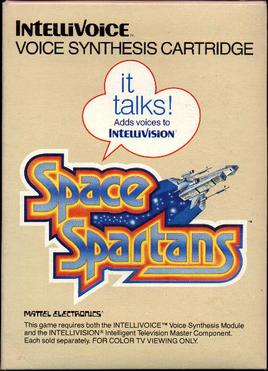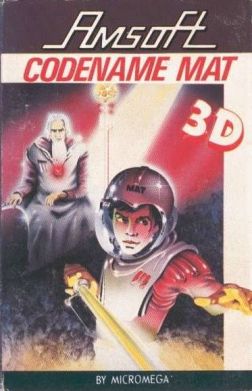
Descent: FreeSpace – The Great War, known as Conflict: FreeSpace – The Great War in Europe, is a 1998 space combat simulation IBM PC compatible computer game developed by Volition, when it was split off from Parallax Software, and published by Interplay Productions. In 2001, it was ported to the Amiga platform as FreeSpace: The Great War by Hyperion Entertainment. The game places players in the role of a human pilot, who operates in several classes of starfighter and combats against opposing forces, either human or alien, in various space-faring environments, such as in orbit above a planet or within an asteroid belt. The story of the game's single player campaign focuses on a war in the 24th century between two factions, one human and the other alien, that is interrupted in its fourteenth year by the arrival of an enigmatic and militant alien race, whose genocidal advance forces the two sides into a ceasefire in order to work together to halt the threat.
Battlefleet Gothic is a miniature wargame that was produced by Games Workshop from 1999 to 2013. It simulates combat between large spaceships. It was developed primarily by Andy Chambers. Although this miniature wargame is no longer supported by Games Workshop, two video game adaptations have been made since its cancellation.

Homeworld 2 is a real-time strategy video game sequel to Homeworld, developed by Relic Entertainment and released in 2003 by now defunct publisher Sierra Entertainment. Its story concerns Hiigara's response to a new enemy called the Vaygr. Its gameplay takes a new direction with the enhancement of its graphics and audio. In contrast to the closely equivalent Kushan and Taiidan forces of the original game, Vaygr and Hiigaran spaceships differ significantly in design and application.
Federation and Empire (F&E) is a strategic-level board wargame set in the fictional Star Fleet Universe spinoff of Star Trek, currently published by Amarillo Design Bureau Inc. (ADB). It is a stand-alone product, but has sometimes been considered the official campaign generator for Star Fleet Battles.

Raptor: Call of the Shadows is a vertically scrolling shooter developed by Cygnus Studios and published by Apogee Software. Its working title was "Mercenary 2029". It was released on April 1, 1994 for MS-DOS compatible systems. The first episode of the game, "Bravo Sector", was distributed as shareware. The other two episodes were sold commercially.

Starmaster is a video game written for the Atari 2600 by Alan Miller and published in June 1982 by Activision. The game is similar to Atari 8-bit family game Star Raiders. Starmaster was not ported to other systems, but has been re-released in collections such as Activision Anthology.
DECWAR is a multiplayer computer game first written in 1978 at the University of Texas at Austin for the PDP-10. It was developed from a lesser-known two-player version, WAR, adding multi-terminal support for between one and ten players. WAR and DECWAR are essentially multiplayer versions of the classic Star Trek game, but with added strategic elements. The game was later used, by scrubbing copyright notices and replacing them, as MegaWars on CompuServe and Stellar Warrior on GEnie. Both versions ran for years.

I-War is a space combat simulator developed by Particle Systems and published by Infogrames. The game was first published in November 1997 in Europe, and in late August of 1998 in North America.

Space Spartans is a space combat simulator video game released for Intellivision, initially programmed by Brian Dougherty, and completed by William C. Fisher and Steve Roney. It is first game which supported the Intellivoice voice synthesis module. Space Spartans is heavily based on Star Raiders, a game released in 1979 for the Atari 8-bit family.

Homeworld is a real-time strategy video game developed by Relic Entertainment and published by Sierra Studios on September 28, 1999, for Microsoft Windows. Set in space, the science fiction game follows the Kushan exiles of the planet Kharak after their home planet is destroyed by the Taiidan Empire in retaliation for developing hyperspace jump technology. The survivors journey with their spacecraft-constructing mothership to reclaim their ancient homeworld of Hiigara from the Taiidan, encountering a variety of pirates, mercenaries, traders, and rebels along the way. In each of the game's levels, the player gathers resources, builds a fleet, and uses it to destroy enemy ships and accomplish mission objectives. The player's fleet carries over between levels, and can travel in a fully three-dimensional space within each level rather than being limited to a two-dimensional plane.

Urban Assault is a 3D combined first-person shooter and real-time strategy computer game developed by the German company TerraTools and published by Microsoft in the year 1998.

Star Wars: Starfighter is a 2001 action video game, developed and published by LucasArts, that takes place right before the Battle of Naboo. The player unites alongside three starfighter pilots and is allowed to take control of several different spacecraft to help stop the invasion that threatens Naboo.

Star Voyager is an outer space shooter for the Nintendo Entertainment System. The gameplay is a first-person shooter from inside the cockpit of a spaceship. The player navigates "sub spaces" of a larger "world map." Gameplay takes place between different subspaces.

Haegemonia: Legions of Iron, or Hegemonia: Legions of Iron, is a 3D real-time strategy game developed by Digital Reality for Microsoft Windows, and by Microïds for OS X, iOS, and Android.
Star Wars PocketModel Trading Card Game is an out-of-print tabletop game manufactured by WizKids, Inc. that debuted in 2007, based on the Star Wars universe. The game was designed by Mike Elliott and Ethan Pasternack.

Codename MAT is a space combat simulator published in 1984 by Micromega for the ZX Spectrum and Amstrad CPC written by Derek Brewster. The game is similar to Atari, Inc.'s Star Raiders from 1979. Both games allow switching between front and aft-facing views and have strategic chart and scan modes. While Star Raiders has the player fighting Zylons, in Codename MAT the enemies are Myons.
Pocket Fleet is a space themed MOBA game developed by Turkish studio 'Overdose Caffeine Games'. The Android version was released in September 2012. followed by iOS and Flash versions. An Ouya port was also planned initially but abandoned due to porting difficulties. The game features arena type PvP and PvE game play using Asteroids-like game mechanics.

Artemis: Spaceship Bridge Simulator is a multiplayer co-operative spaceship simulation game created by Thomas Robertson for Windows, iOS, and Android devices. The game is designed to be played between three and eight players over a local area network, with each player using a separate computer that provides a different spaceship bridge station, such as helm control or engineering.

Star Conflict is a free-to-play dynamic massively multiplayer online space action game. The gaming platform Steam describes it as an "action-packed, massively multiplayer space simulation game". The core of the game is PvP spaceships battles, PvE (Co-Op) missions and an open world. The game uses a free-to-play business model.

Galaxy On Fire 2 is a spaceflight simulation video game created and distributed by Fishlabs in 2009.














